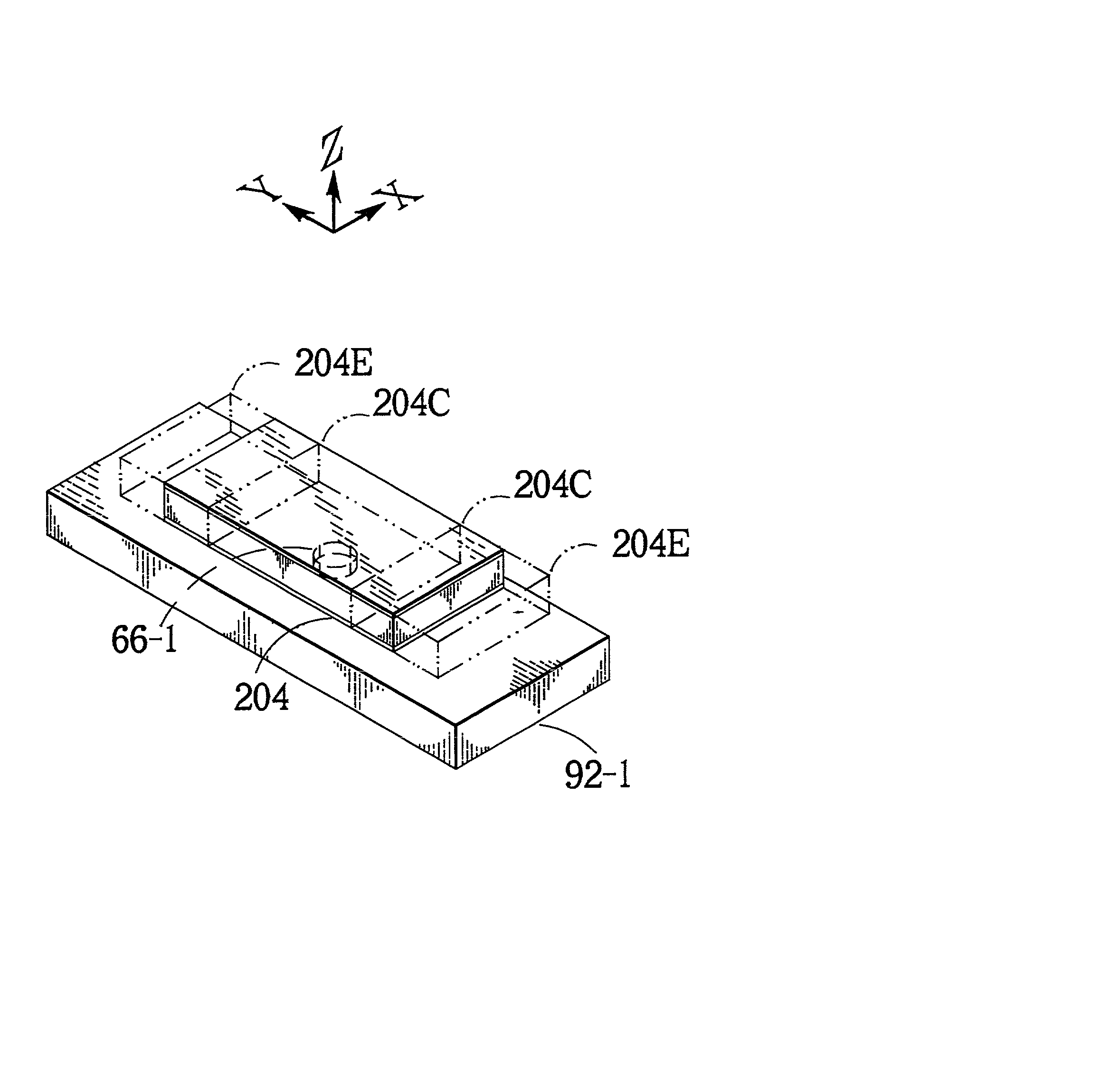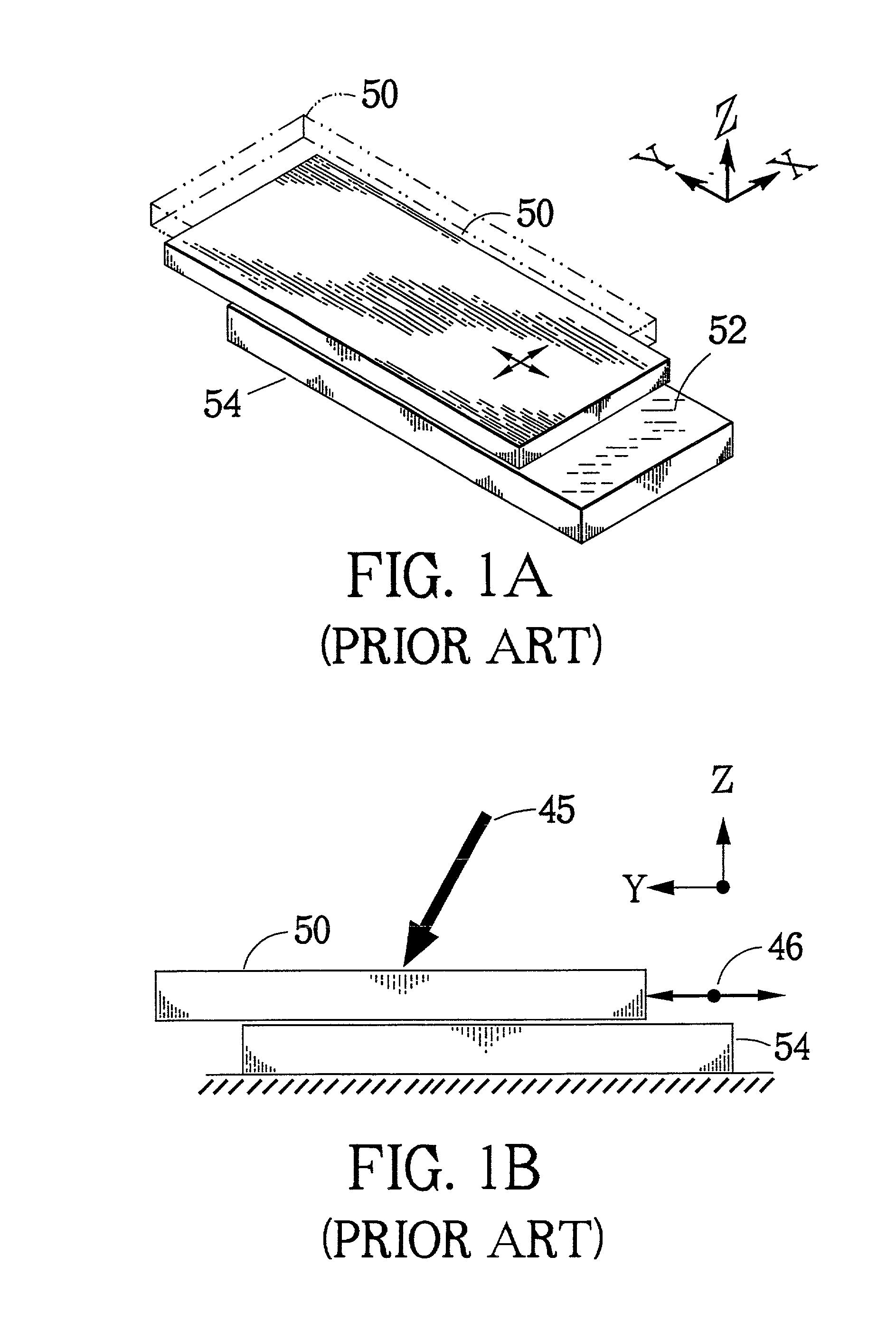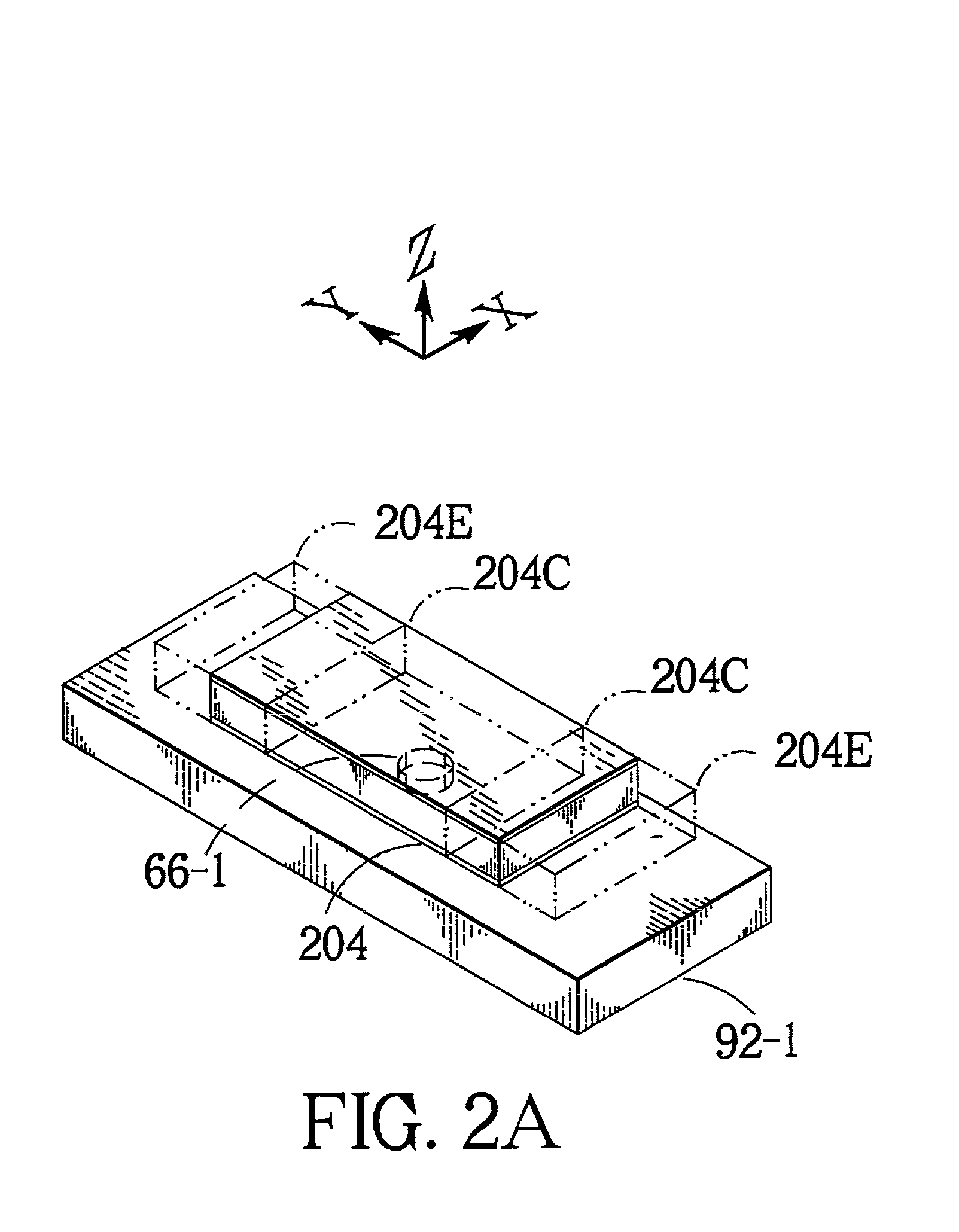Smart Sonic bearings for frictional force reduction and switching
- Summary
- Abstract
- Description
- Claims
- Application Information
AI Technical Summary
Benefits of technology
Problems solved by technology
Method used
Image
Examples
Embodiment Construction
[0074] One of the fundamental objectives of all friction reduction devices is to minimize the applied sliding force necessary to initiate and sustain a sliding motion between the contacting surfaces of two objects. In prior techniques, such as those that use lubricants, balls, or variations in operating parameters, this goal was achieved by actually reducing the actual coefficients of friction. Other prior methods, such as magnetic and vibrational levitation techniques, do not reduce the coefficients of friction itself, but minimize the compressive or normal component of the force between the two sliding surfaces which in turn, will minimize the required applied sliding force.
[0075] The present invention uses a different approach to reach the same goal by externally supplying most of the energy that is dissipated by the frictional sliding process in a manner that does not, on the average, interfere with the original load sliding motion. If this technique is implemented on two slidin...
PUM
 Login to View More
Login to View More Abstract
Description
Claims
Application Information
 Login to View More
Login to View More - R&D
- Intellectual Property
- Life Sciences
- Materials
- Tech Scout
- Unparalleled Data Quality
- Higher Quality Content
- 60% Fewer Hallucinations
Browse by: Latest US Patents, China's latest patents, Technical Efficacy Thesaurus, Application Domain, Technology Topic, Popular Technical Reports.
© 2025 PatSnap. All rights reserved.Legal|Privacy policy|Modern Slavery Act Transparency Statement|Sitemap|About US| Contact US: help@patsnap.com



